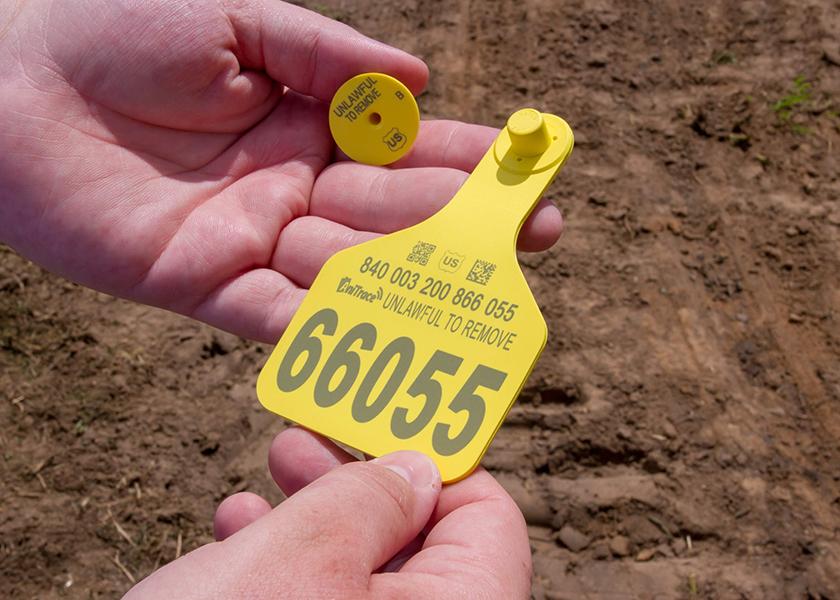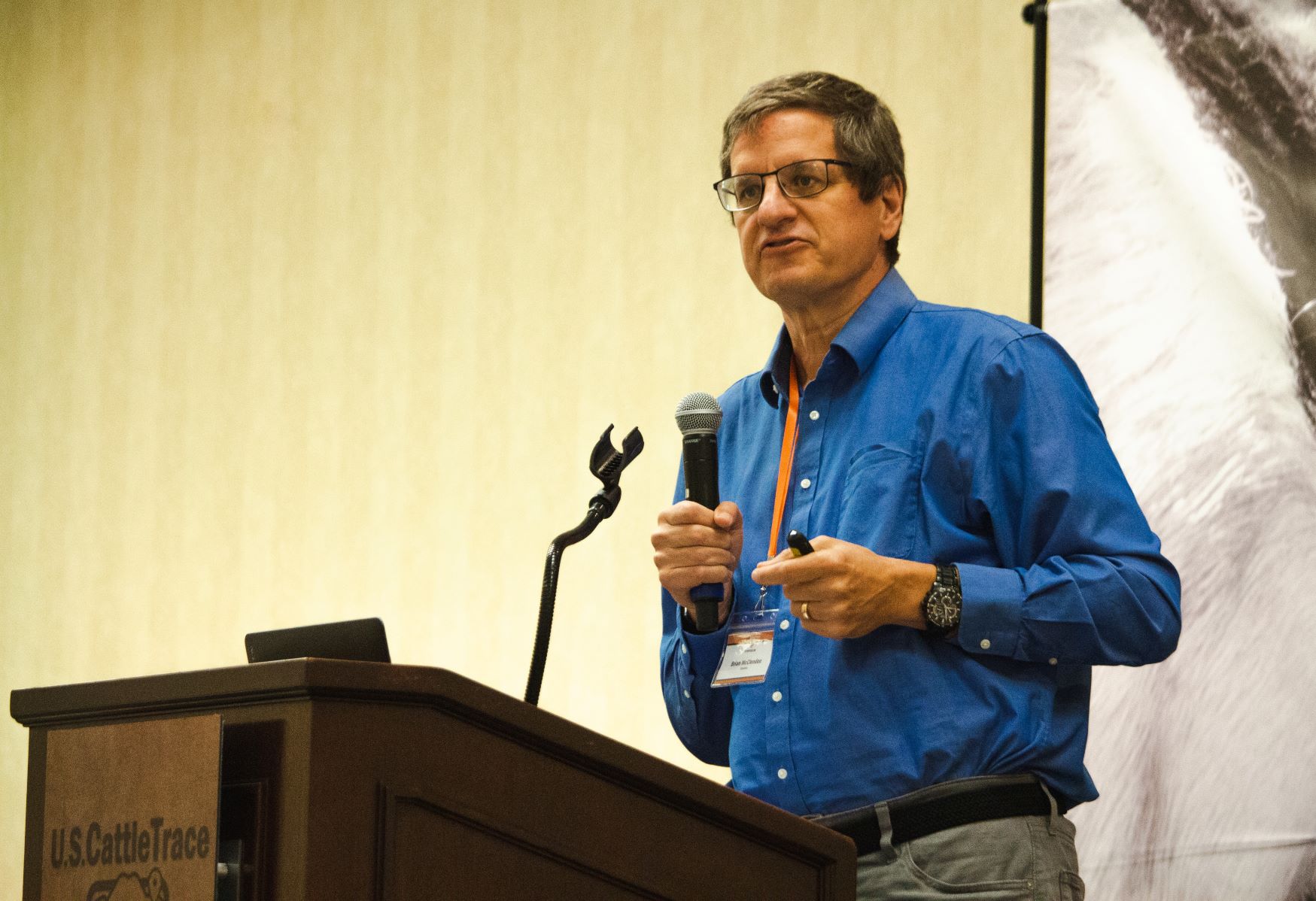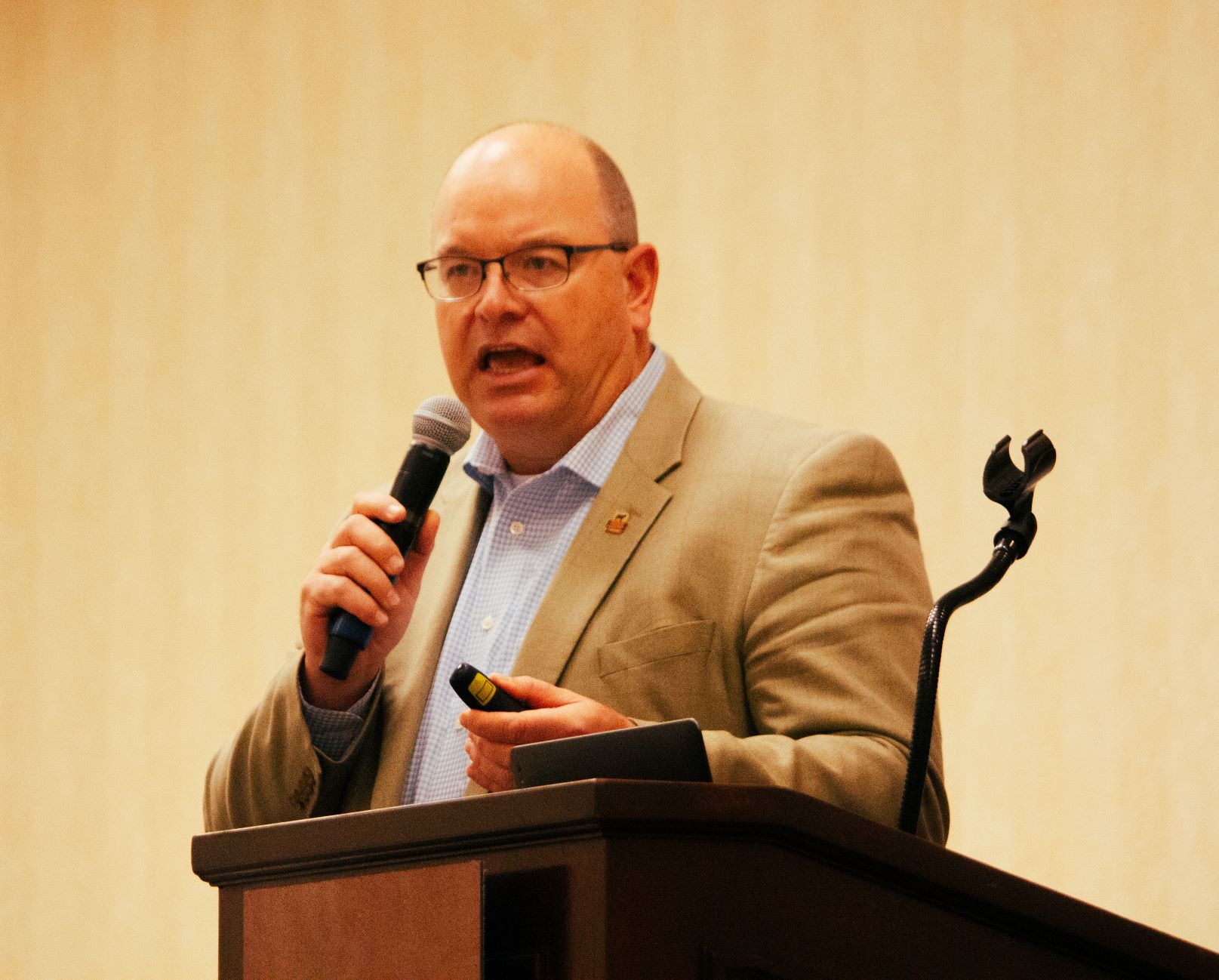CattleTrace Symposium Addresses Machine Learning Opportunities to Meet Consumer Demands Through Traceability

Cattle producers and industry stakeholders from more than 20 states and countries gathered in Wichita,, KS, for the U.S. CattleTrace Annual Symposium Nov. 18-19 to collaborate on advancing the beef industry by addressing the cause of traceability.
U.S. CattleTrace Board Chairman, Brandon Depenbusch began the symposium reminding attendees, “U.S. CattleTrace has always been and always will be focused on disease traceability. There are three options to encourage traceability: a government mandate, foreign disease outbreak or through a voluntary movement by producers. U.S. CattleTrace is here to encourage a voluntary movement for traceability led by value creation.”

The Symposium began with a presentation about machine learning from Brain McClendon, Co-Founder of Google Earth and a Technology Investor. Producers can utilize cameras with machine learning for forage monitoring and growth predication, and individual animal monitoring on pasture and in the feedlot.
Producers can improve forage through hyper local continuous monitoring of forage growth, soil temperature and moisture, with the hyper local prediction of forage growth and volume. The process will allow for validation of existing grazing practices in place by producers. Producers can utilize machine learning to monitor individual animals through ear tag identification. The cameras will be able to report daily body condition, body weight change, feed intake and a daily analysis of animal welfare. The cameras will also offer automated illness and lameness detection through behavior analysis and can calculate predicated time to market.
“If you can measure the weight of a cow from a picture every day and do it accurately you can do amazing things. You can trace the performance of the cow from pasture to feedlot to market to money. Producers can analyze which cows through which processes are efficient at making profit at the end of the chain,” McClendon said.
Producers who use data and machine learning will increase precision individualized animal agriculture, optimize land use, improve climate impact, and create greater consumer acceptance. The use of precision individualized animal agriculture will lower input costs via individual animal monitoring, reduce morbidity and mortality, reduce feed costs by identifying more feed efficient cattle and maximize the animal sale price through predictive optimal marketing.
Machine learning will optimize land use by increasing grazable forage through controlling invasive species and increasing inherent productivity of the land by improving soil health. Additionally, producers can generate additional revenue streams through monetization of ecosystem services. Producers can improve their climate impact by selling carbon credits due to improved methane detection, mitigation, and enhanced carbon sequestration, and enhance production efficiency by better understanding management impacts on climate.
“What motivates producers to make changes is if they can make money. This technology can do that,” McClendon said.
The potential for value-added opportunities for traceability was presented by John Stika, President, Certified Angus Beef. Certified Angus Beef is a not-for profit organization owned by families and ranchers of the American Angus Association that sells over 1.2 billion pounds of beef globally, with $92 million paid to cattlemen each year with a brand promise of the best tasting, best-selling and best sourced beef for the consumer.

The consumer pull-through strategy is the only sustainable flow of dollars from which producers can continue to build their business. Consumers are changing and broadening their expectations of the industry. Eating meat is the norm but consumers want producers to increase their focus on animal welfare, health, the planet, and social responsibility.
The U.S. ranks 20 out of 27 in overall level of citizen trust in societal institutions such as trade associations, farms, ranches, processors, and other supply chain organizations that define the meat industry, Stika said. It is no longer enough to simply have the best product and merely tell the best story, it is all about establishing trust. Information and traceability are the currency of trust. Traceability is not the endgame, but with increased traceability producers increased the transparency to the consumer which increases the trust consumers have for the beef industry.
“Consumers are more interested in why you do what you do than they ever have been," Stika said. "The beef industry is complex, which makes it harder for the consumer to trust what they don’t understand. Traceability is by no means the end game; it is nothing more than the vehicle to get to trust. As trust about the beef industry increases, beef consumption increases.”
Sixty-two percent of consumers say animal welfare is important to them and roughly half of consumers report they are consuming less meat due to animal welfare concerns. One-third of beef consumers would pay more for beef from sources with animal welfare certifications and 3 out of 10 consumers believe animal welfare should be standard practice. Value-added may be realized through increased beef consumption rather than $premiums/cwt. Additionally, most consumers trust that beef production can be done in an environmentally friendly way, yet fewer believe the beef industry is socially responsible.
“Consumers trust farmers and ranchers more than any other part of our supply chain. Consumers believe beef production can be done well and they want to know that our value-system aligns with their value system,” explained Stika.
The session ended with a question asked by Stika, “What opportunities to improve management does traceability offer producers and what are you doing that could interest more people?”







